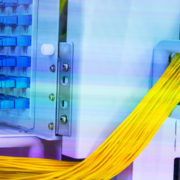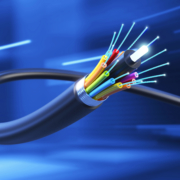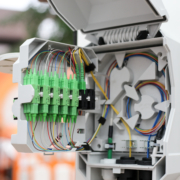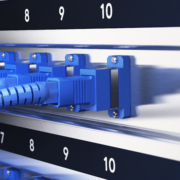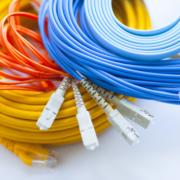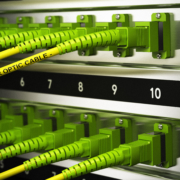Fibre Optic Cabling in Business
The Role of Fibre Optic Cabling in Business
Fibre optic cabling systems are becoming increasingly important in modern business. Communication, after all, is crucial when it comes to operating a business. Business needs information to be transmitted and received in several ways. And it has to be fast. We live in fast-paced times and anything below par is going to hinder you competitively. Fibre optic systems are vital for success and you need to know more about them.
What does Fibre Optic Cabling do?
Fibre optic systems use cabling which is similar to electrical cable. But there’s an important difference: fibre optic cabling uses fibres to carry light. This light can be transmitted over large distances, easily over 100km if necessary, and makes it perfect in communication systems. Optical fibres are generally housed within glass cladding, the glass helping to reflect back any light that escapes the core.
What are the 2 types of fibre optic cables?
It’s important to understand the difference between single mode and multimode fibre
two main forms of fibre cabling:
- Single Mode: The core size of single mode fibre cables is very thin and this is where its innovation lies. Thanks to the thin core, light signals can travel directly through the core without the risk of bouncing off the internal sides of the cable. This significantly reduces the amount of light reflection created during transmission. The signal benefits from a sustained quality and, as a result, is able to travel successfully over long distances. Single mode cables are typically used to power the internet and telephone applications.
- Multimode: The size difference, when it comes to the cable core, is noticeably larger in multimode cables. In fact, the diameter can be up to ten times larger than single mode cables. Greater light gathering capacity is the main benefit from this difference. This allows light to travel along a number of different paths within a cable. Whilst these cables can only transmit signals over short distances they are perfect for connecting internal computer networks.
What is Fibre to the Desk?
You may have heard the phrase Fibre to the Desk mentioned before, but you’re only going to know what that means if you’re a communications professional. Thankfully it’s a simple concept. Fibre to the Desk is a cabling structure which directly connects end users to fibre cabling. This is notably different to Fibre to the Office which involves local conversion from fibre to copper cabling to connect users. Fibre to the Desk gives increased bandwidth and high speeds and is considered a superior solution due to its simplicity.
How Can You Test Fibre Optic ?
Fibre optic cables, as with any form of technology, are prone to wear and tear along with failures. Being able to test these cables is essential in maintaining them. The best way for testing the integrity of fibre cabling is through an Optical Time Domain Reflectometer – OTDR testing. The OTDR is able to compose a comprehensive picture of the state of fibre cables. It can be used to analyse splice loss, find faults and accurately measure lengths. Performance or structural problems of your cabling system can then be identified and rectified.
How do they install Fibre Optic Cables?
For more information on fibre optic cabling installations please visit our Data Cabling page.
Also see PON networks – Passive Optical Network Installation
Find out how fibre optic can support the growth of your business, don’t hesitate to get in touch. Call 020 3912 6200

